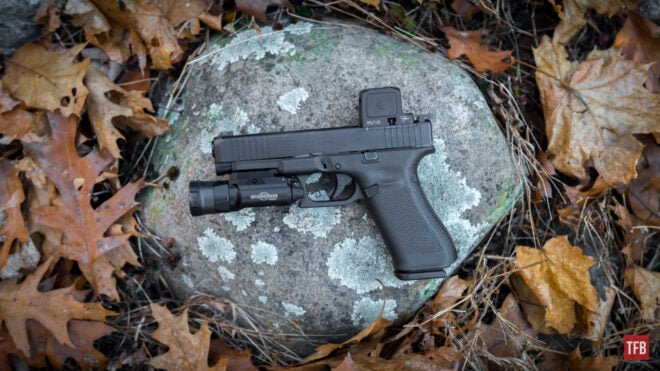The open emitter versus closed emitter debate for red dot optics is stacked with two camps of people. The first group prefers a slimmer optic with a svelte profile. The second group prefers die hard dependability in every condition and environment. The new Trijicon RCR red dot optic is an attempt to show the two groups that their requirements are no longer mutually exclusive. I will make the assumption that the majority of slide mounted optic users are equipped with open emitter optics – specifically the Trijicon RMR. So is the RCR a worthy upgrade? Let’s take a look.
More Trijicon @ TFB:
- Trijicon Officially Announces the New RMR HD and RCR Red Dots
- TFB REVIEW: The Trijicon RMR HD Red Dot Sight
- Battle Royale of the Mini Reflex: Trijicon RMR vs NEW Trijicon RMRcc
TFB REVIEW: Trijicon RCR Closed Emitter Red Dot Sight
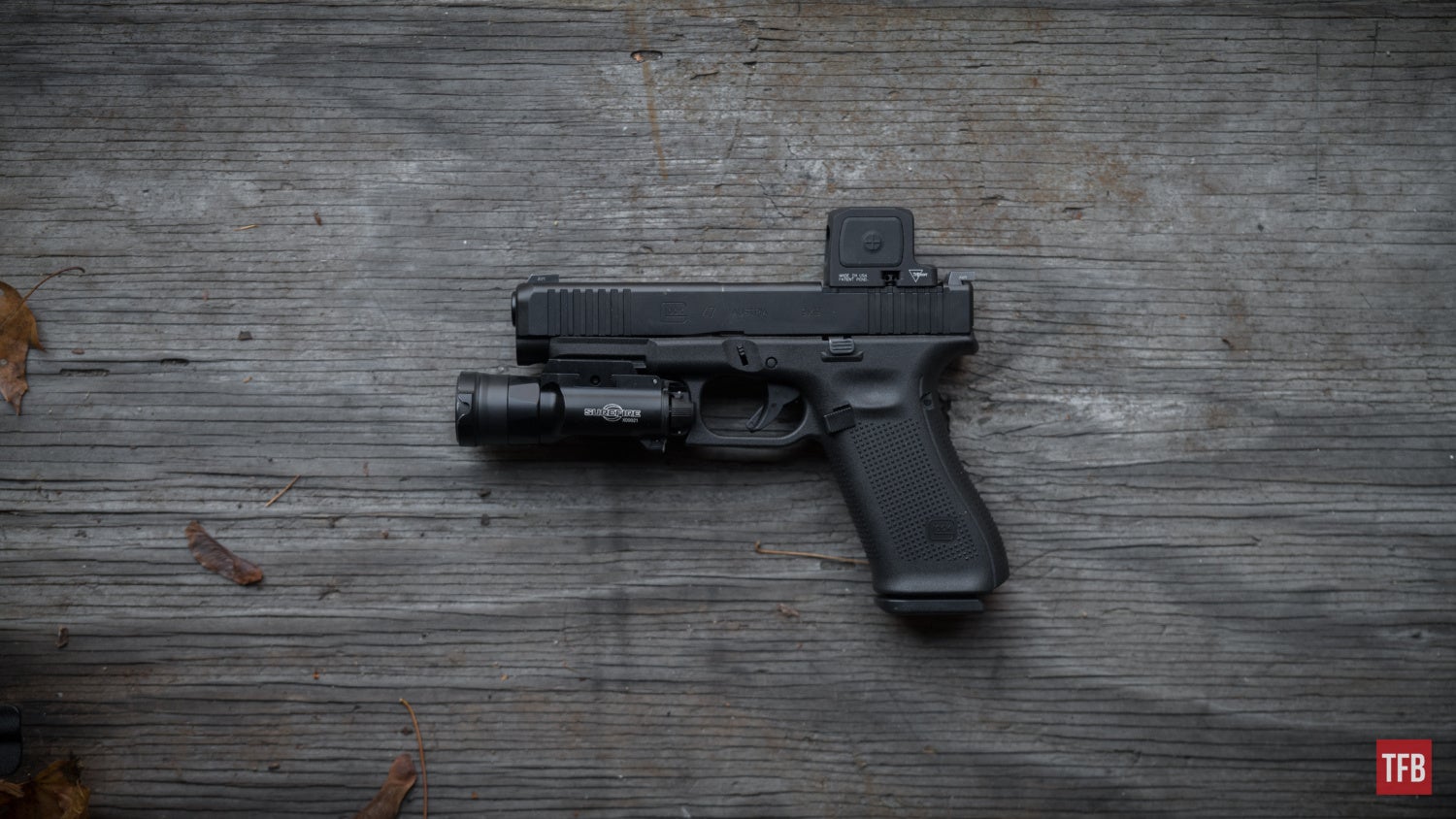
TFB REVIEW: Trijicon RCR Closed Emitter Red Dot Sight
For some of you, this review of the Trijicon RCR might border on the edge of boring. In terms of features, the RCR is like a GLOCK pistol – all the features you need without the need for unnecessary flair that adds complexity, weight, or bulk. If you are interested in the latest in feature-rich tech and are ok with an open emitter optic, my suggestion is to head over to the RMR HD review that will outline ambient light adjustably, an additional reticle option, and other advancements.
The RCR gives the user a dot – either a very bright dot or a night vision capable dot – in a very compact closed emitter package.
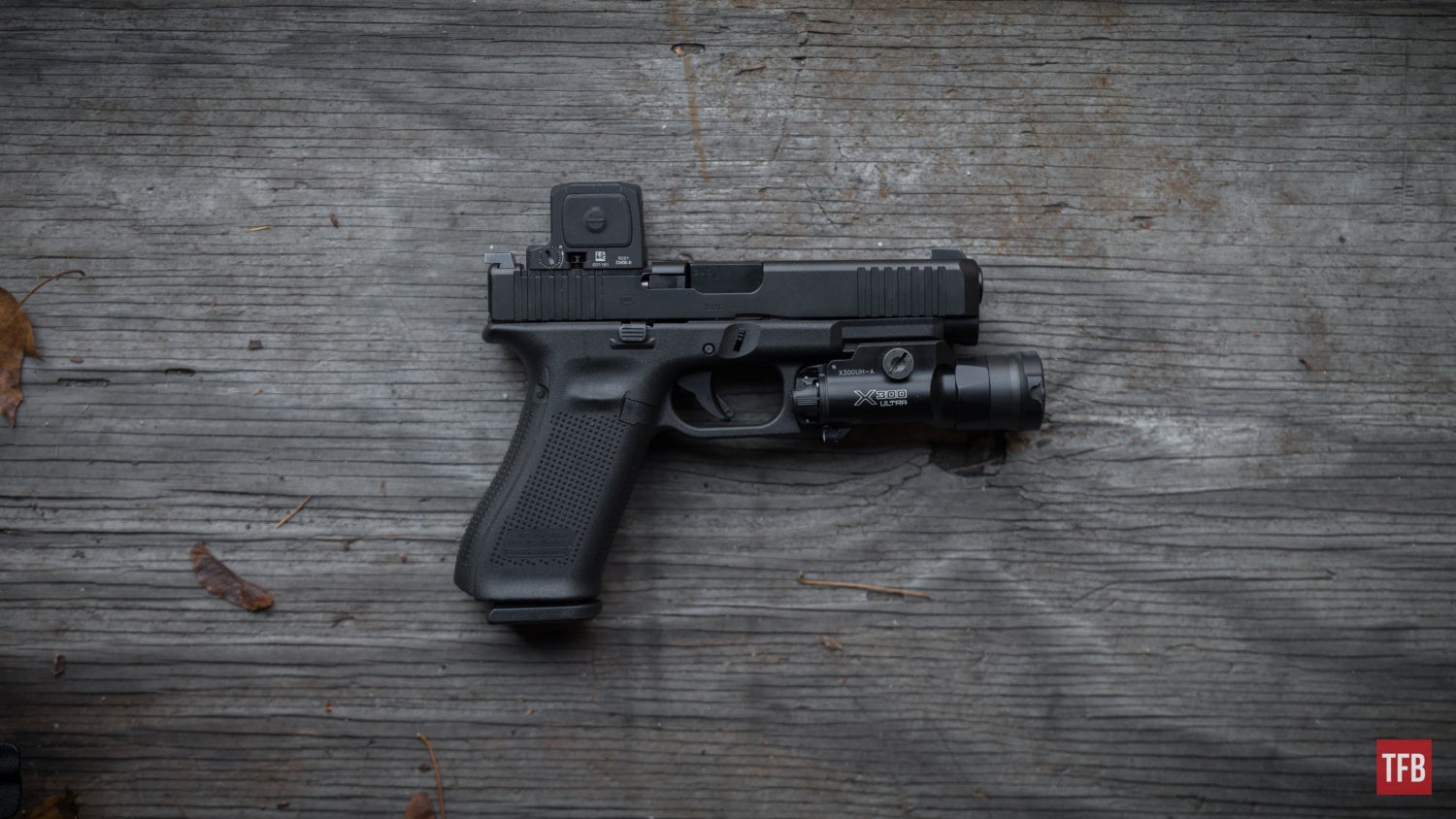
TFB REVIEW: Trijicon RCR Closed Emitter Red Dot Sight
The brightest setting of the RCR is unbelievably bright, meaning that if you are in the desert southwest United States or deployed to a region with no cloud cover and a reflective ground surface covering like sand or snow, the RCR will be able to keep you solidly on target. On the other hand, with three night vision settings, the RCR can handle the darkness equally well.
I did test the night vision settings under a PVS-14 and they work as advertised. Again, this is one of those boring review attributes; the Trijicon RCR presents a clean solid dot across 10 different brightness settings. It’s not that exciting to talk about, but important nonetheless.
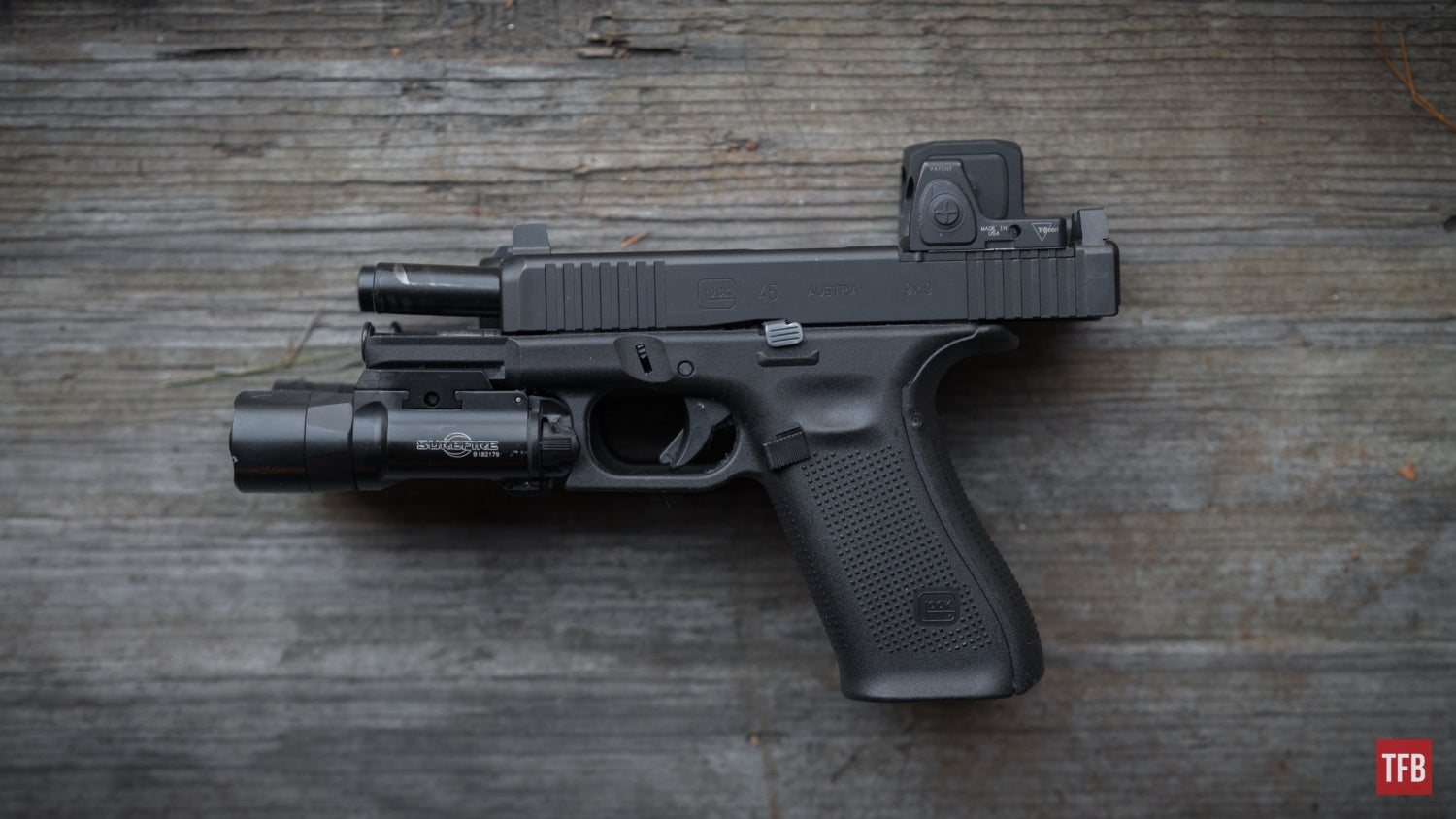
TFB REVIEW: Trijicon RCR Closed Emitter Red Dot Sight
As far as the profile goes, the RCR, by design, is larger than the RMR. While the specifications of both the RCR and the RMR list a height of one inch, I found that the RCR sat slightly higher on the GLOCK MOS pistols. A negligible difference in my opinion, but it is worth noting.
To enclose the emitter, the back of the RCR fills in the space where the RMR would otherwise be open. While this does make the whole optic “larger”, I can’t see how this would affect the pistol’s profile in any real way. It’s not like that space is being used for anything else if you are running a slide-mounted optic like the RMR. My only thought is that some holsters may not be reverse compatible, but that wasn’t the case with my Safariland models which are somewhat an industry standard.
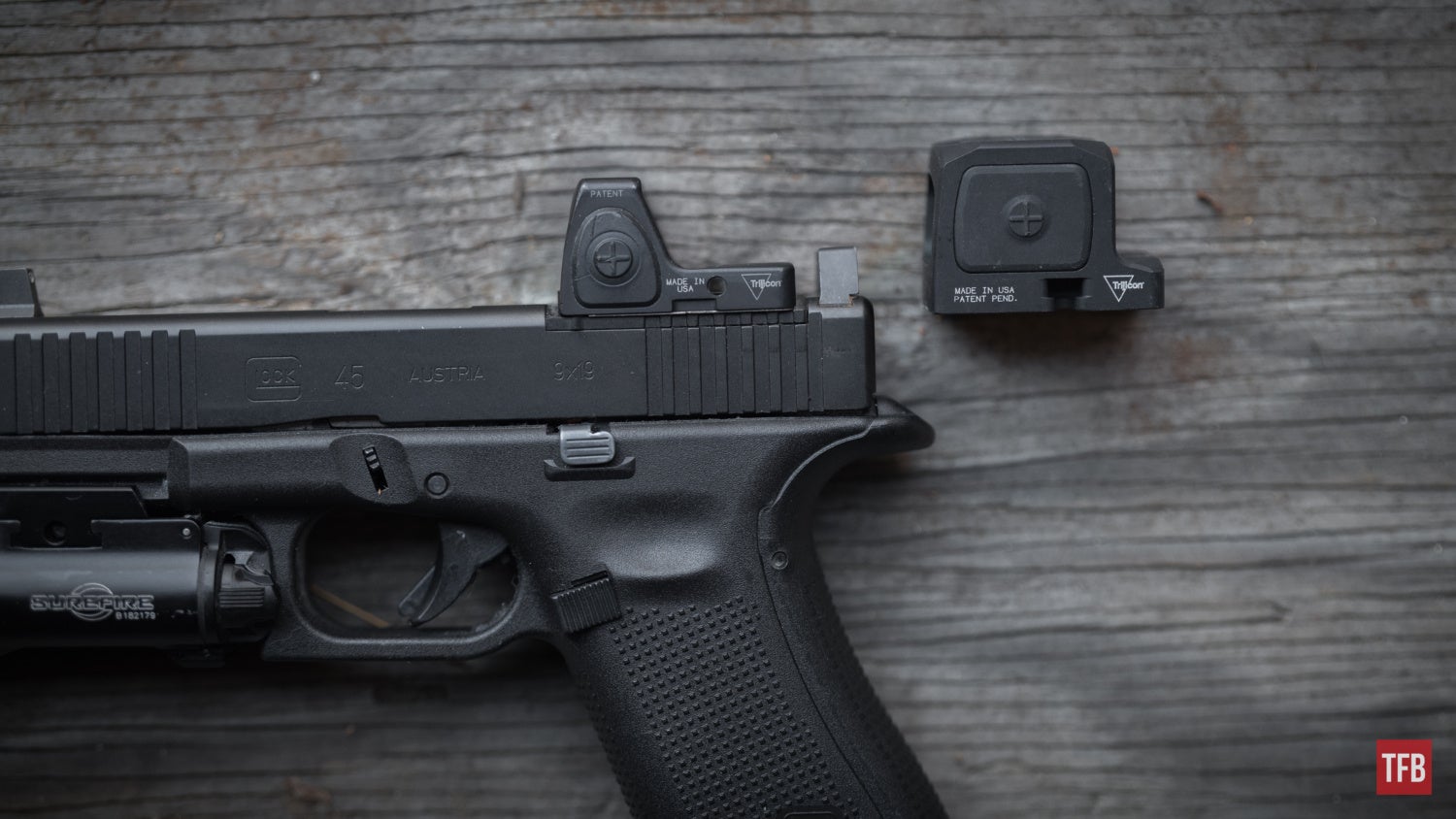
TFB REVIEW: Trijicon RCR Closed Emitter Red Dot Sight
Even with its additional size, the RCR utilizes the RMR footprint which is one of the most important aspects of this new model. No one who buys a new red dot wants to learn that they also have to buy a new mounting system as well. We’ll get into the mounting process later in the review.
Again, like learning that a Jeep is a capable off-road vehicle, the other obvious features of the Trijicon RCR like durability, windage and elevation adjustments, brightness settings, and an Alaska-to-Africa operating temperature range are all performance standards expected from Trijicon.
Let’s take a look at the numbers.
Trijicon RCR – Specifications:
An extremely rugged and durable closed emitter optic which meets the demanding standards for military and law enforcement applications. The Trijicon RCR™ represents the next evolution of the Trijicon RMR® and is designed to be as durable as the legendary Trijicon ACOG®, while also improving precision and accuracy with any style or caliber of firearm in any type of environment. The RCR can withstand direct impacts and survive in the harshest environments, while still providing enhanced accuracy and an excellent field of view. The RCR does this while not requiring additional or new plates to be used as it works with the current RMR bolt pattern and direct mounts without the use of a dovetail.
- SKU: RCR1-C-3300001
- MSRP: $849.00
- Manufacturer’s Page: https://www.trijicon.com/products/details/rcr1-c-3300001
- Sight Window: 0.88 x 0.64 in.
- Length x Width x Height: 1.8 in x 1.2 in x 1 in
-
Weight: 1.98 oz. (56.13g)
-
Magnification: 1x
-
Reticle Pattern: 3.25 MOA Dot
-
Illumination Source: LED
-
Illumination Settings: 10 brightness settings including 3 NV and 1 Super Bright
-
Power Source: CR2032
-
Battery Life: 6 years on Setting 5
-
Adjustment: 1 MOA per click
-
Adjustment Range: 150 MOA Total Travel
-
Eye Relief: Infinite
-
Housing Material: 7075-T6 aluminum
-
Finish: Matte Black
-
Submersion Depth: 65 ft. (20m)
-
Operating Temperature: -40F to 140F (-40c to 60c)
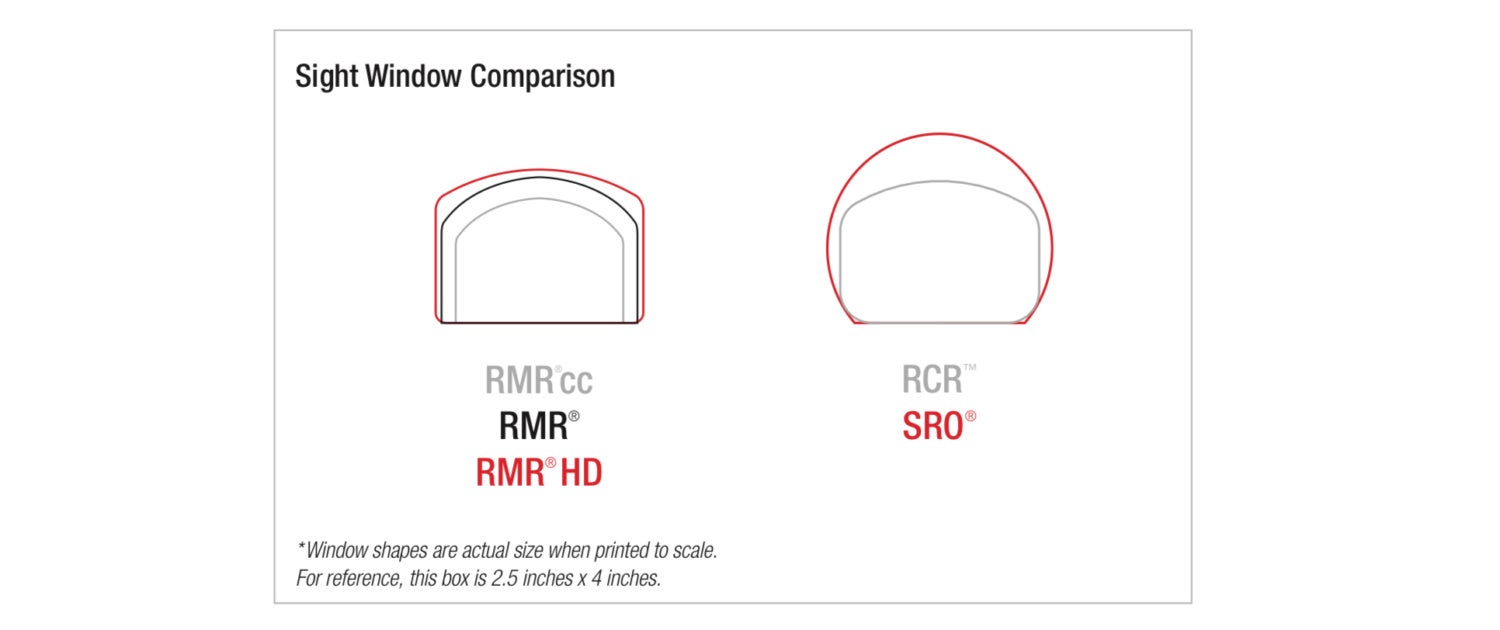
- Multi-Platform-Friendly, No Additional Plates Needed
- Same Deck Height As The RMR
- Outstanding Durability
- True-Color, Multi-Coated Lens
- Super Strong Patented Capstan Screw
- Easily Adjustable Windage And Elevation
- Top Loaded Battery
- Upgraded Electronics And Buttons
I have included the official Trijicon mounting tutorial video at the end of the review and I encourage you to watch it and follow the steps. When I initially opened the box and saw the mounting screws, I was worried the process would be a pain.
However, it was actually very simple. Place two of the correct height Capstan screws into the cutouts on either side of the RCR and hold them in by pinching the optic with your thumb and index finger. Then lower the RCR onto the mounting plate, placing the pins into the holes in the bottom of the optic. Use the included small hex key to tighten the Capstan screws. Use the holes on the side of the screws to rotate the screws from right to left. Check out the video to understand the correct amount of torque that is required.
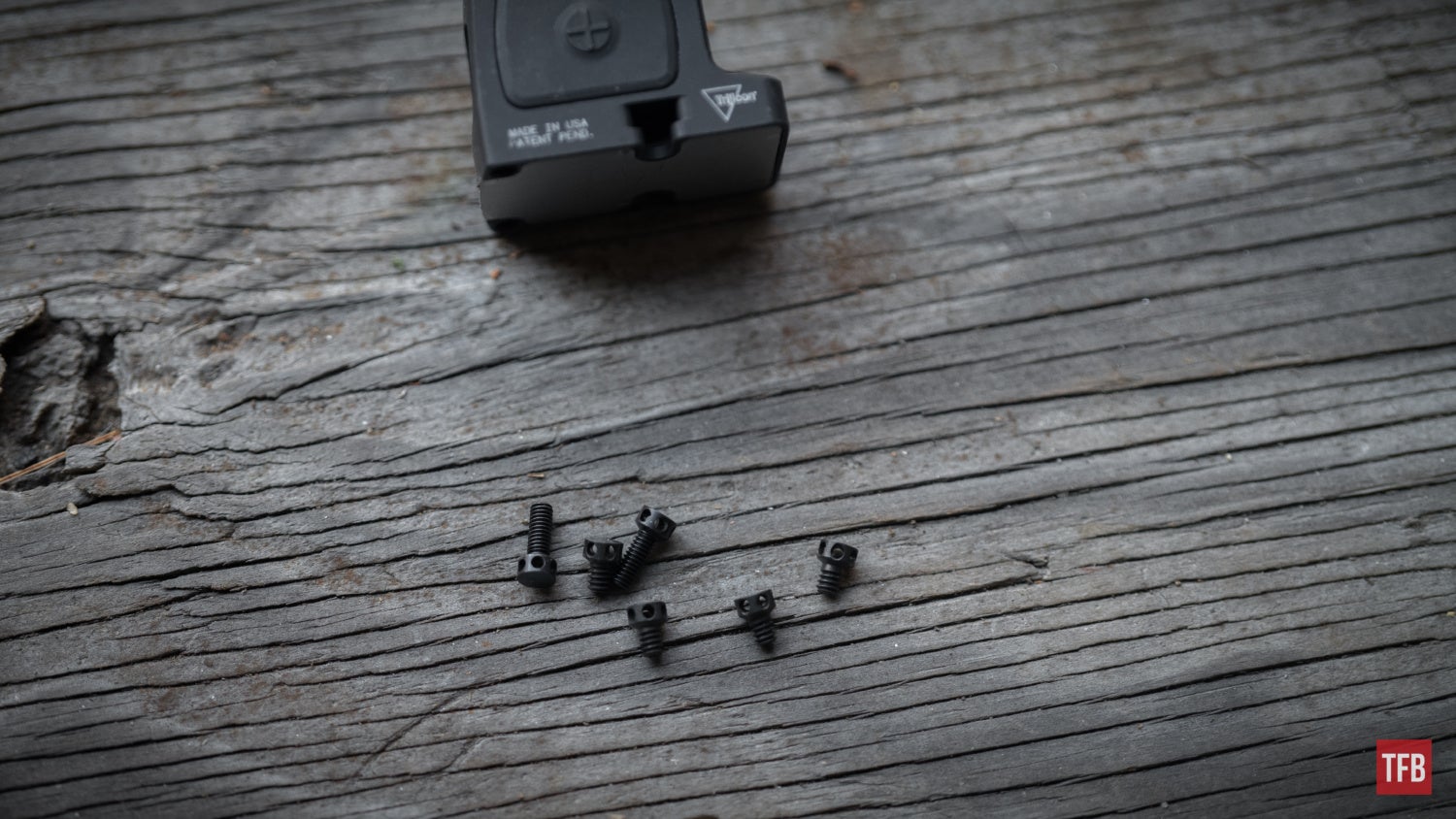
TFB REVIEW: Trijicon RCR Closed Emitter Red Dot Sight
The larger buttons as compared to the RMR are a nice touch, especially this time of year when I am shooting with gloves on the outdoor range. The windage adjustment is an easy flat head screw with defined clicks.
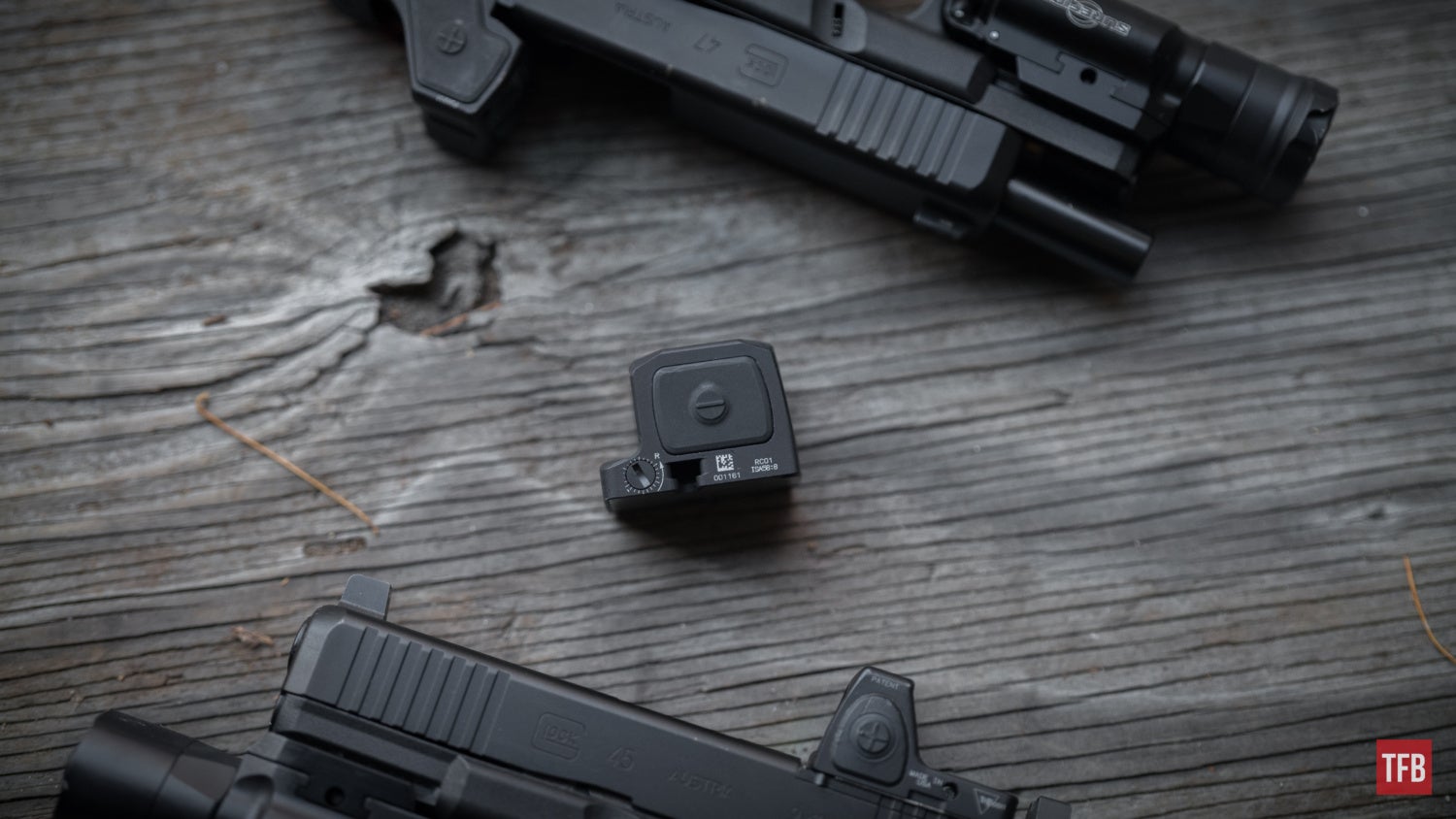
TFB REVIEW: Trijicon RCR Closed Emitter Red Dot Sight
Notice the screw head profile cutouts on each side for the unique mounting system that allows the closed emitter RCR to use the same footprint as the open emitter RMR.
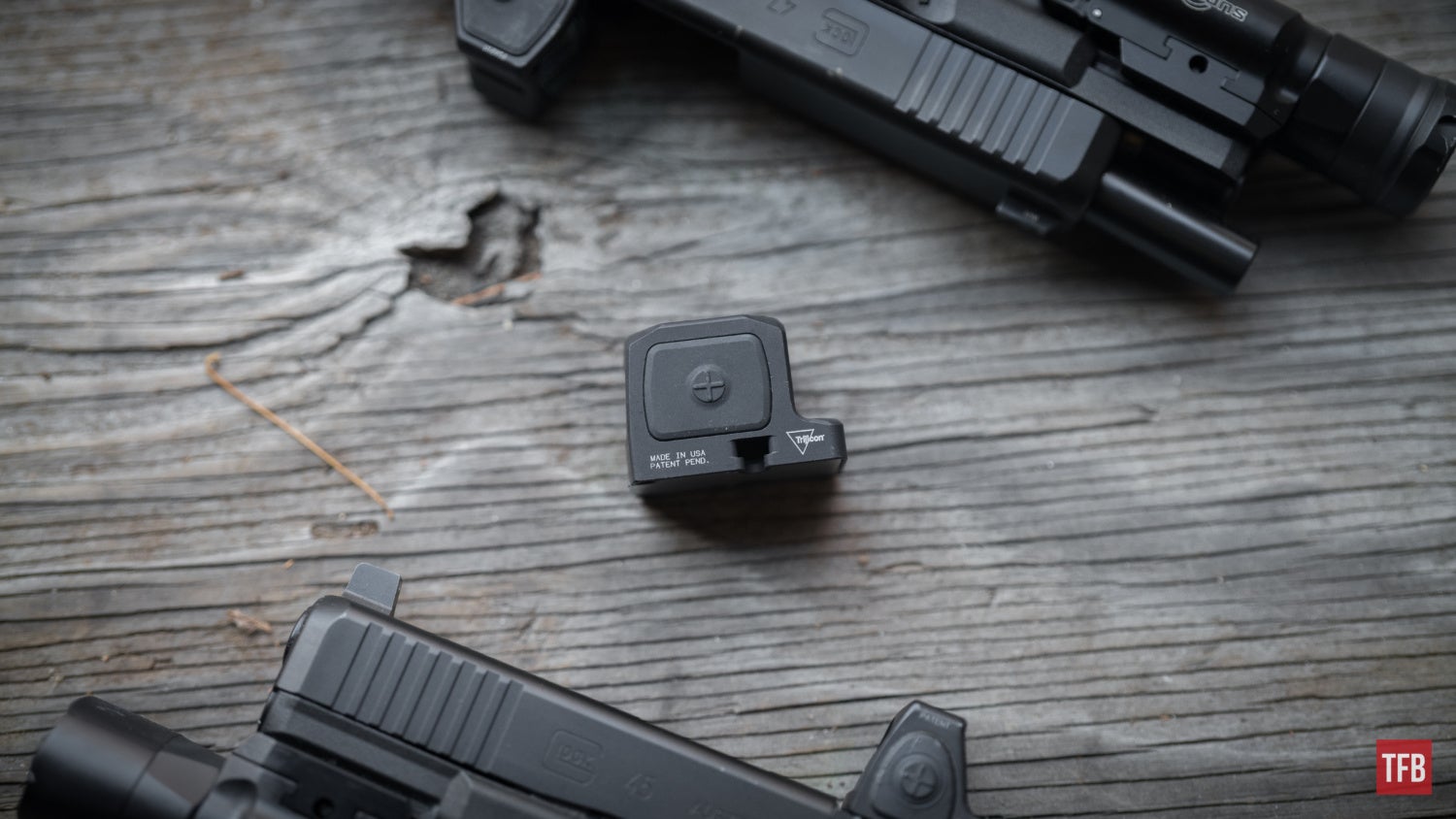
TFB REVIEW: Trijicon RCR Closed Emitter Red Dot Sight
The top-loading battery compartment is perfectly set into the top of the optic between the protective ridges. It is an aluminum cap which is a welcome feature compared to other manufacturers who decide to use a plastic battery cap that deforms with repeated use.
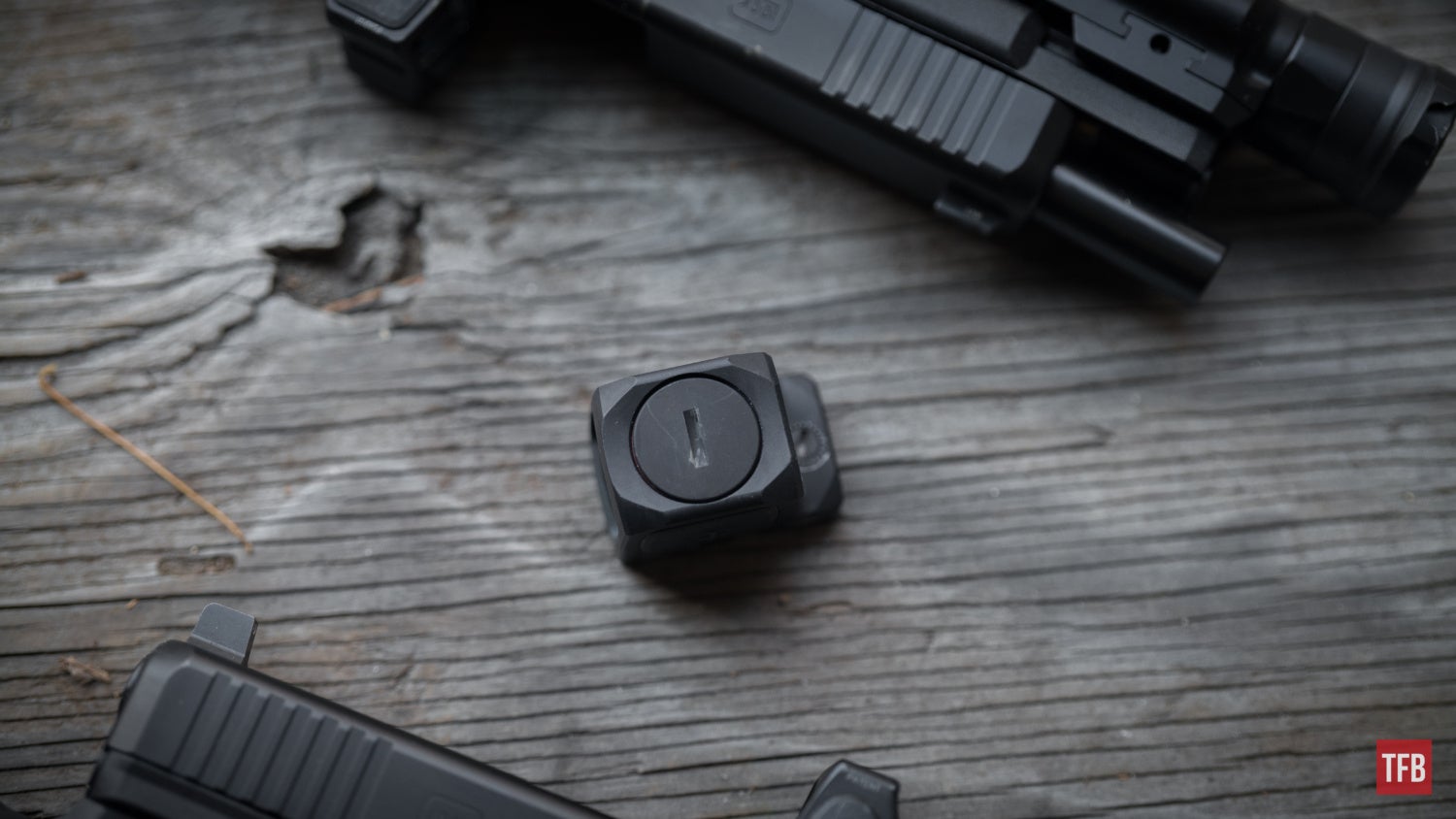
TFB REVIEW: Trijicon RCR Closed Emitter Red Dot Sight
The bottom of the RCR is sealed with a metal plate since, unlike the RMR, the battery is loaded from the top and not the bottom. In addition, the RCR can handle submerged depths to a maximum of 66 feet.
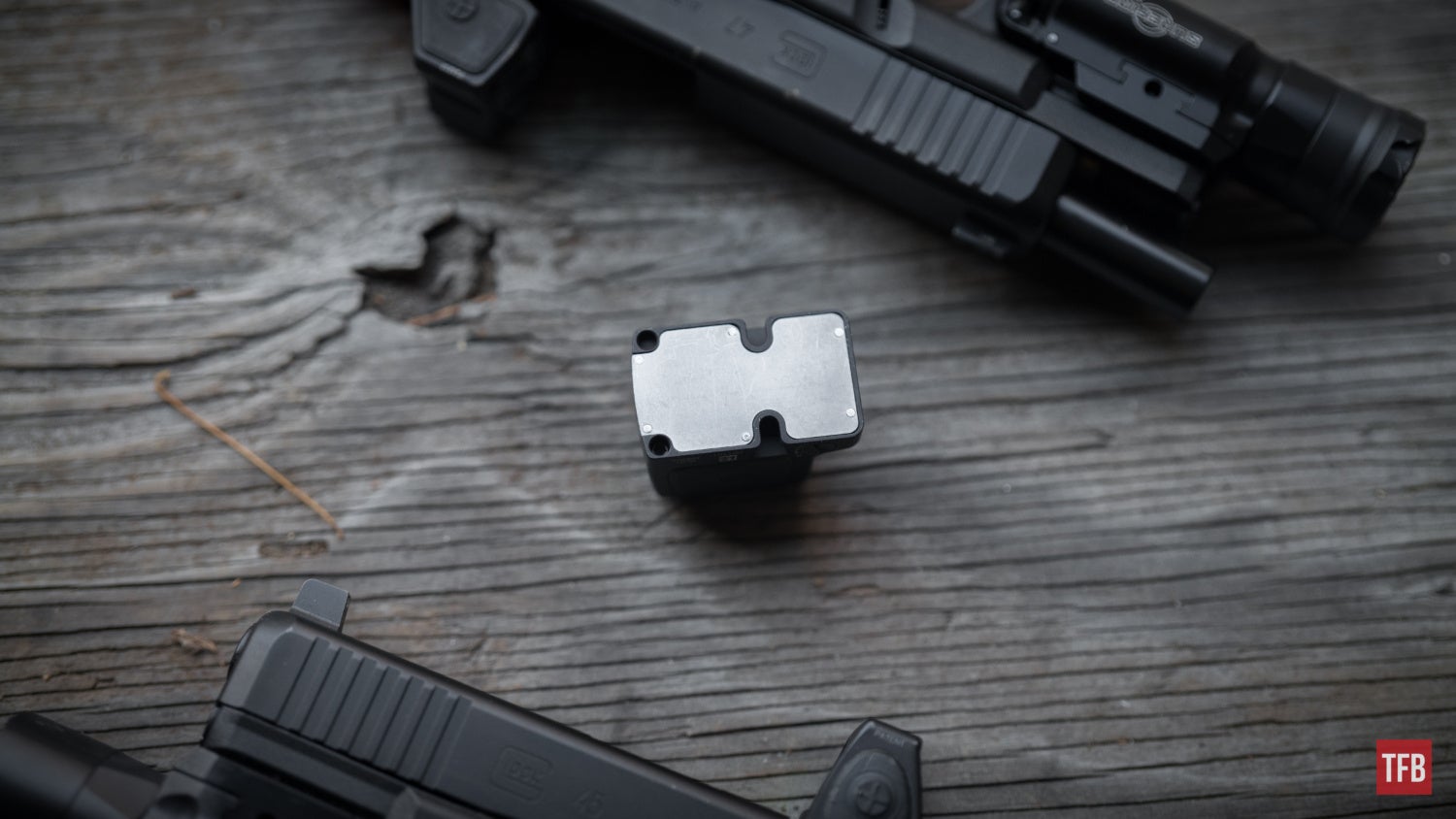
TFB REVIEW: Trijicon RCR Closed Emitter Red Dot Sight
Size Comparison – RCR vs ACRO
I don’t normally like to discuss other manufacturer’s products in our reviews – I think it is unfair to use one opinion to compare and contrast two different products. But in my opinion, the Aimpoint ACRO is the direct competitor to the Trijicon RCR and I wanted to at least take a look at the overall size differences.
Below, the only criticism of Aimpoint I will offer in this review is the plastic battery cap which in my opinion should be aluminum and possibly recessed into the side of the optic.
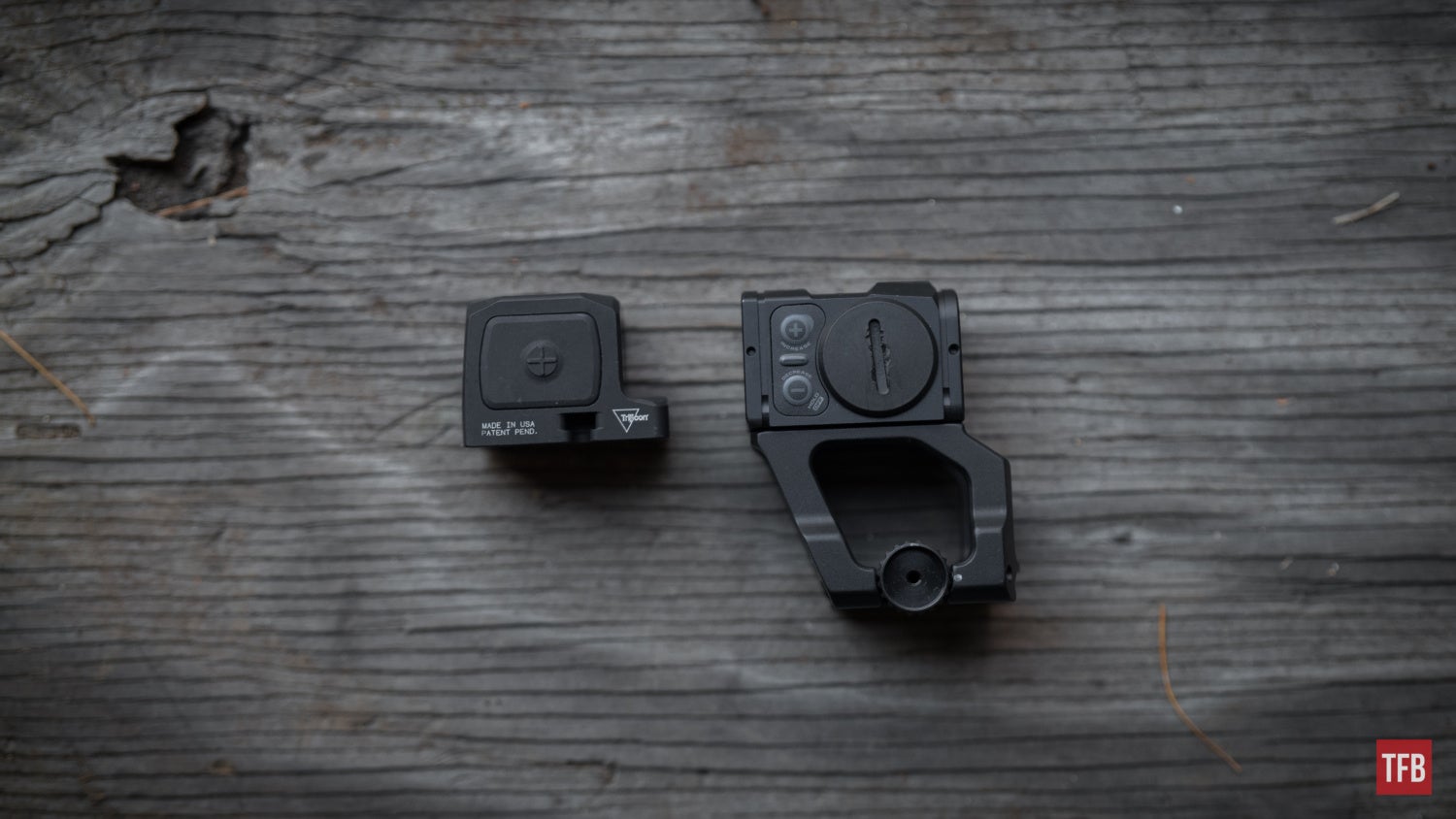
TFB REVIEW: Trijicon RCR Closed Emitter Red Dot Sight
The ACRO is longer by a tenth of an inch and taller by about two-tenths of an inch. The Trijicon RCR uses the standard flathead windage and elevation adjustments while the ACRO uses the Aimpoint two-pin adjustment tool.
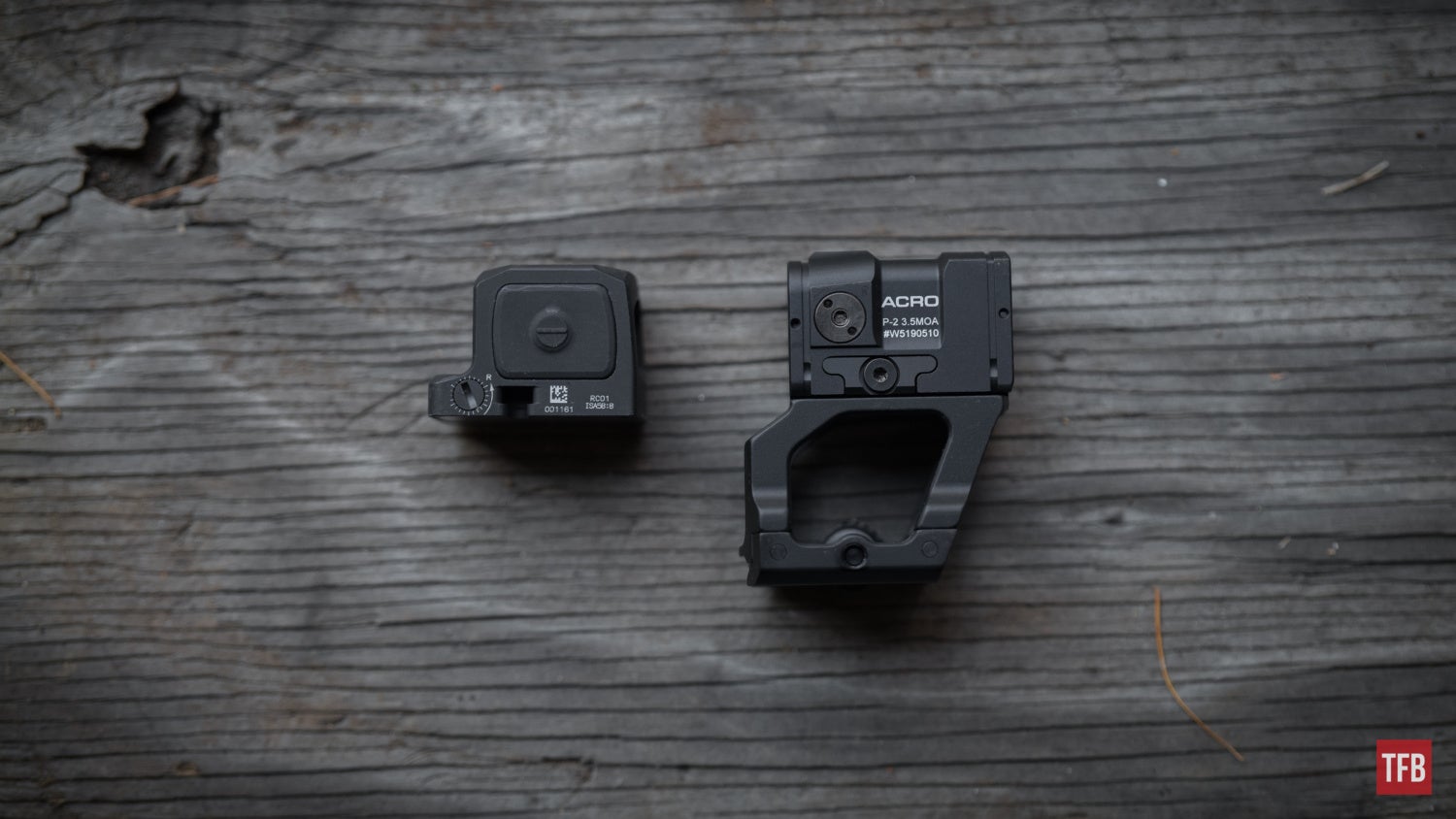
TFB REVIEW: Trijicon RCR Closed Emitter Red Dot Sight
RCR Sight Picture and Profile
Despite its extra size, the RCR presents almost identically to the RMR. Physically, the housing sits slightly higher, but the objective window shares the same height as the RMR. Even though the RCR is a closed-emitter optic, I couldn’t tell much of a difference from behind the gun when compared to the profile of the RMR.
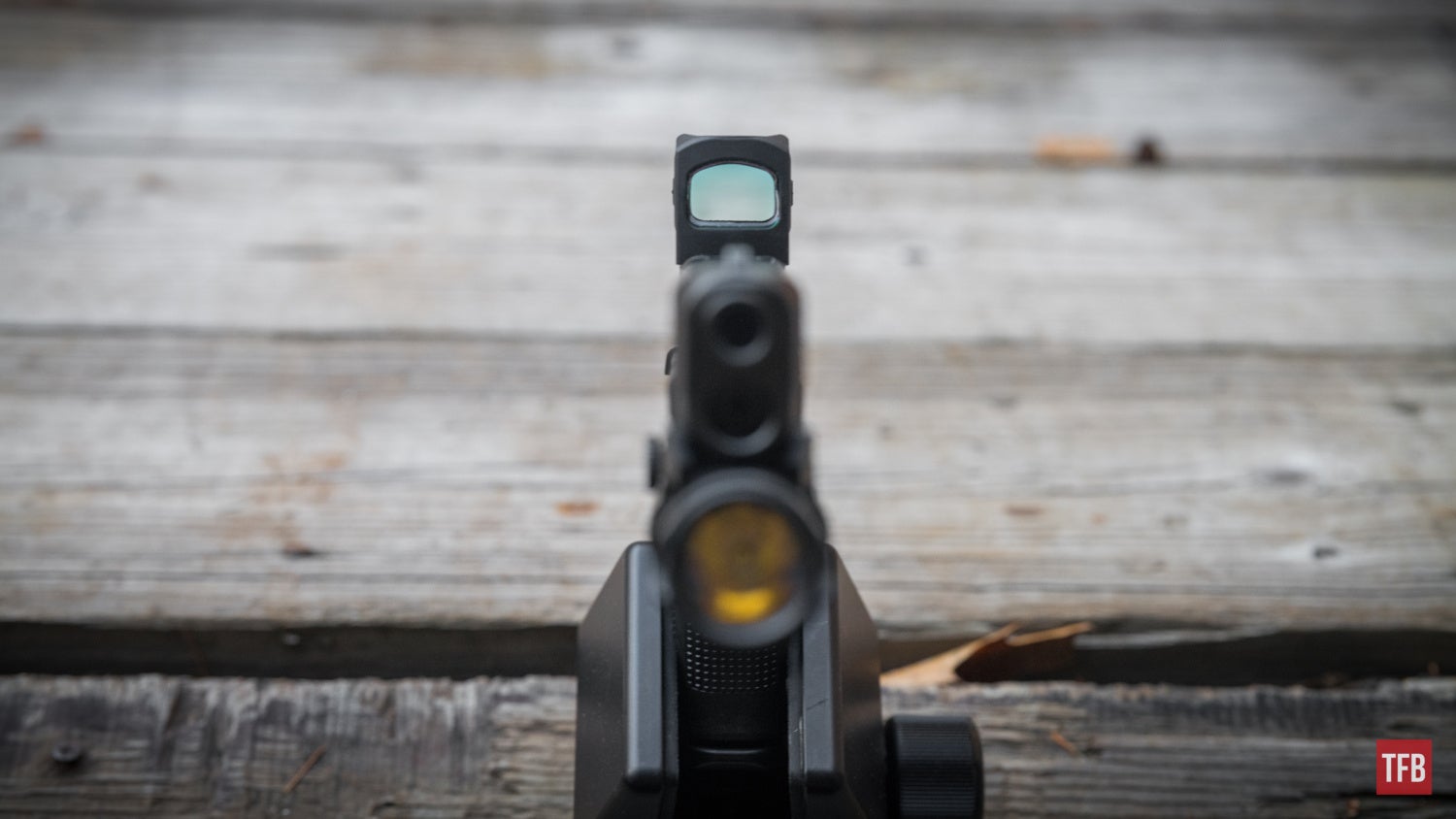
TFB REVIEW: Trijicon RCR Closed Emitter Red Dot Sight
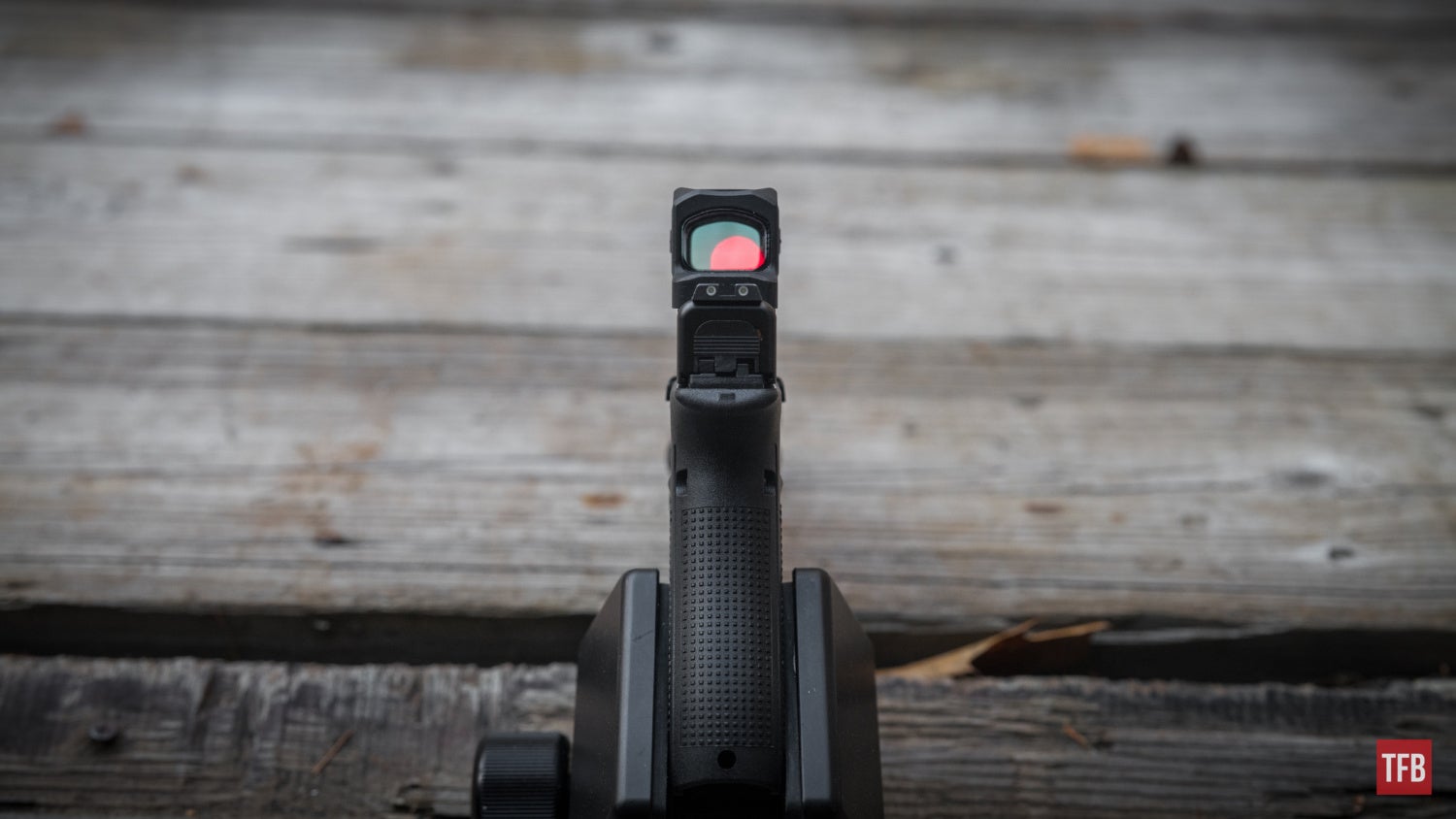
TFB REVIEW: Trijicon RCR Closed Emitter Red Dot Sight
In my RMR HD review from a few weeks ago, a couple of you posted comments about the lens coloring. For both the RMR HD and the RCR there is a slight blue tint when looking through the objective, but it is greatly reduced compared to the legacy RMR Type 1 coloring. I honestly didn’t notice any blue until I was asked to confirm the lens coloring.
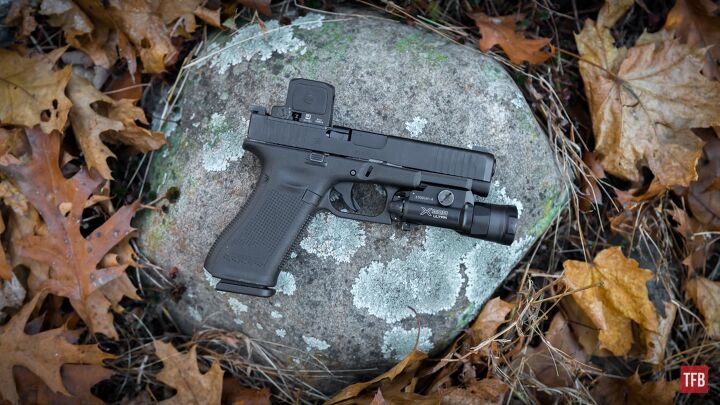
TFB REVIEW: Trijicon RCR Closed Emitter Red Dot Sight
Range Time and Conclusions
Again we return to the less-than-exciting parts of the review, when the RCR is just expected to perform reliably and not display any dazzling feature sets. The optic held firmly using the Capstan screw mounting system and retained its zero. The dot is crisp at varying brightness levels, even for my eyes with astigmatisms. There were no failures of any kind – if you were looking for click-bait drama, I apologize for the boring reliability of the RCR. It works and it does its job as advertised.
If you ask me if it is worth it to upgrade from an open emitter slide-mounted optic to a closed emitter RCR, my answer would depend on your intended use case. A daily carry pistol or a duty pistol that will see a variety of environments, all of which have the potential to occlude an open emitter optic, I think an RCR is an excellent choice. This also applies to those who still run iron sights and are finally ready to upgrade to 21st-century optics technology; you may want to go straight to the RCR.
If you plan on adding an optic to a range or competition gun, you may want to check out the Trijicon SRO with a larger window. Or if you want the extra features of ambient light adaptability or a reticle with a dot and a 55 MOA circle, the new Trijicon RMR HD might be an option.
Either way, the Trijicon RCR is a hard-use and capable slide-mounted red dot sight and I can recommend it for any shooter that is looking for a closed emitter optic that will perform in any situation.
We are committed to finding, researching, and recommending the best products. We earn commissions from purchases you make using the retail links in our product reviews. Learn more about how this works.
 Your Privacy Choices
Your Privacy Choices
